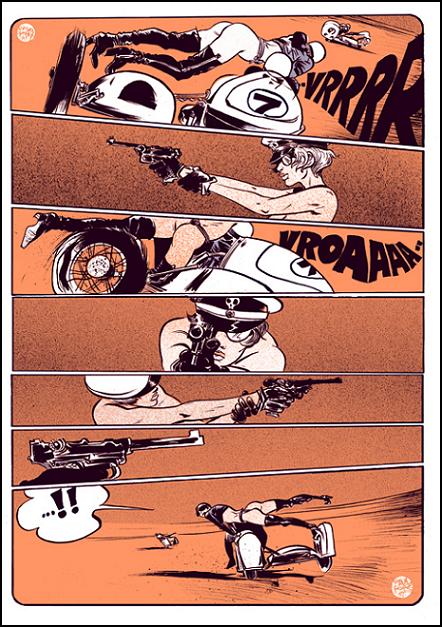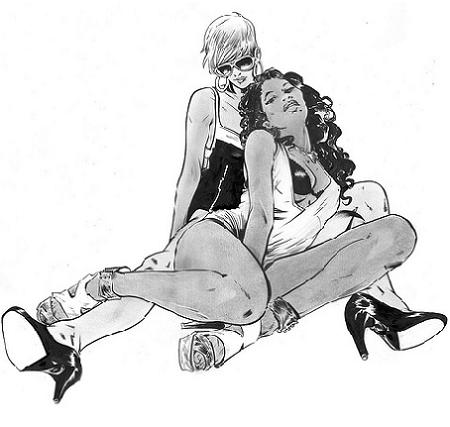#December2009
I Have Pulphope
Paul Pope is not only an amazing comics-creator, but a true inspiration and one of my personal heroes. I admire Pope because of his ability to swoop into the world of comic books to deliver amazing stories & fresh perspectives, and then stage an exit before falling victim to the pitfalls of the medium. I don’t know much about the technical aspects of illustration, but I know that every single panel of Pope’s work I’ve ever seen feels authentic/genuine/as though the man is incapable of phoning it in.
Although he’s spun some of great yarns about franchise-characters , he understands that they fulfill a certain role. In an interview to address his exhibition at the Art Directors Club in New York City, Pope offered the following:
“They periodically kill off Superman or Captain America or Batman, then according to [formula], they resurrect them again. I don’t follow continuity comics unless a really amazing cartoonist is drawing the story, an Eduardo Risso or a Frank Quietly or a John Cassaday or a Steve Rude. I think superheroes represent themes rather than function as true characters in any literary sense. Because in real life and in literature, people and characters make choices and have a destiny, and must necessarily change–maybe for the better or the worse– but they are substantively different from the person they were at the beginning of the story. The superheroes don’t change, the guardians of the franchise don’t want to change them, and the audience probably doesn’t want it either.”
So although I enjoy the hell out of Batman Year 100 (which, roughly speaking, reads to me as a cross between the Batman mythos and a Bladerunner-styled technofuture), Pope’s original works are the creations to which I am most drawn. For an amazing testament to the power of sequential art, I strongly recommend 100%. Despite being a bit of a cynic, this book makes me believe in the value of love and art and trying to make the most out of a life that often seems utterly insignificant. And while this all sounds great in theory, Pope’s execution is nothing short of perfection.
As a student of narrative, there’s been many a night in which I’ve asked myself, “What’s the fucking point of this stuff? Why should I even bother concerning myself with the past? What can fiction do for the world?” The best answer I’ve ever received comes on the eighteenth page of Pulphope, Pope’s collection of art and essays:
“When I need my own mirror of men and angels, I too turn to hear the voices of the dead. Without even having faith in mystics, I too turn to take my cue from dead mystics. When I need voices, I turn to Emerson and Thoreau. Their Transcendentalism rings a bit hollow to me (I am no Platonist), but their words still ring clear and true. I turn to the dour civics of Confucius and the clear-eyed cynicism of Machiavelli. The life-embrace of Epicurus. I turn to the dreamtime of Jung and the pastorality of Tolkein. And to others. These poets and philosophers are the whispering dead I hear, pointing the way to the road which leads out of this inferno. These are the dead on the roof with me, these are my Virgils. They point their parchment fingers toward the arc of the heavens, helping make sense of a meaningless rising moon and a mute and dumb setting sun.”
Today, the mailman dropped off a limited edition Paul Pope print from the folks at Nakatomi Inc. The one-sheet is a tribute to Guido Crepax, an Italian comics artist of yesteryear whose work is (apparently) marked by sexually-charged female figures. The 13×19 variant features babes, motorcycles, and a shootout; in other words, it’s dope.

I couldn’t be happier with this print. Beautiful in its own right, I’m going to hang it with the added satisfaction of knowing that I possess a limited edition poster created by comic books’ most inspirational, if not underappreciated, artists.

I don’t have much hope — but I have Pulphope.




